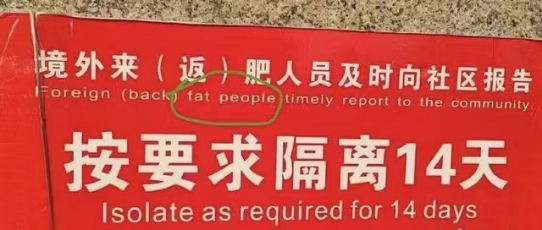Parts of the body — back and waist; slicing up reality
The word for "back" in Mandarin is bèi 背, the word for "waist" is yāo 腰. But nearly all of my Chinese students and friends, including the most learned, get the English words mixed up. They will say "My waist aches" when they mean "My back aches" and "Don't break your waist" when they mean "Don't break your back".
Aside from exchanges in daily conversation, I also noticed this confusion in historical contexts. One of the most famous early medieval Chinese poets, Tao Qian (Yuanming) (365- 427), when asked to dress up in a fancy, formal way to show his subservience to a visiting inspector, famously declared, “Wú bùnéng wèi wǔdǒu mǐ zhéyāo, quánquán shì xiānglǐ xiǎo rén yé 吾不能為五斗米折腰,拳拳事鄉里小人邪!” ("I cannot bend my back to obsequiously serve a petty person in the village for five pecks of rice." Many translators of this passage render "zhéyāo 折腰" as "bend [my] waist" rather than "bend [my] back". The "five pecks of rice" refers to his salary as a local magistrate, which he'd rather give up than lose his dignity and self respect. Because of his unbending attitude, Tao abandoned government service altogether by the age of forty and returned to his own hometown to live as a farmer.
[Reference for specialists: from Tao Qian's brief biography in the "Biographies of recluses", scroll 64 of the Book / History of Jin (Jìnshū 晉書) (Zhonghua shuju ed., vol. 8, p. 2461)]
Read the rest of this entry »


